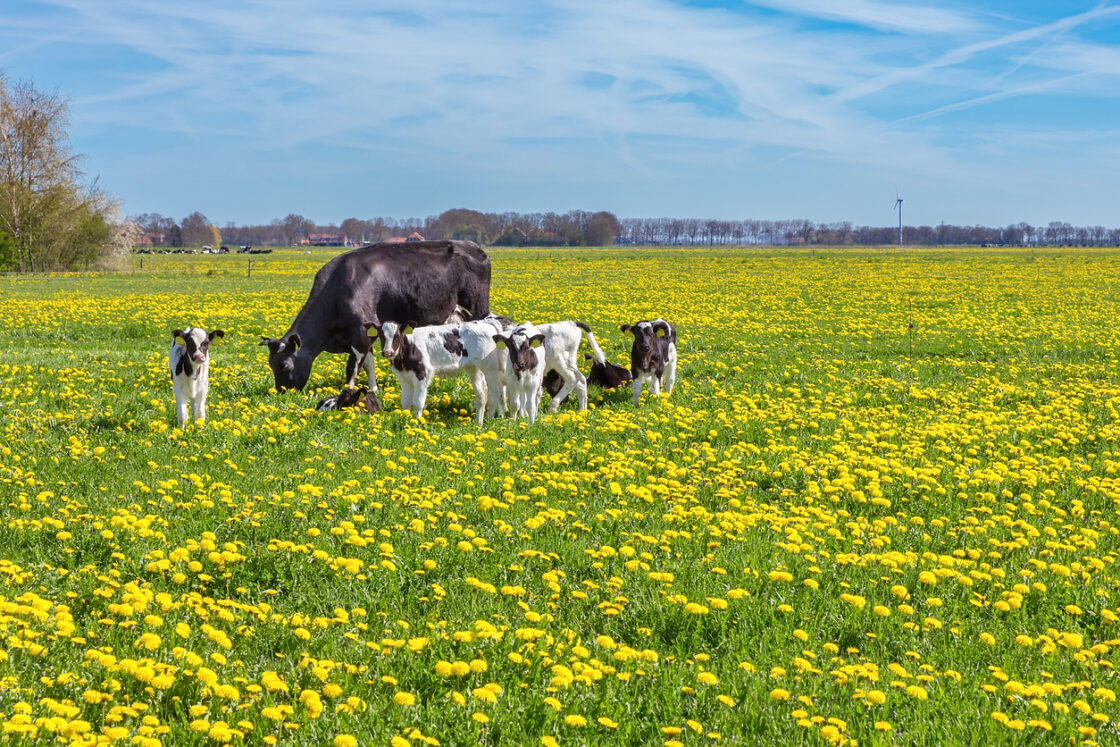Ahimsa Milk: Dairy I Can Actually Support

Even if you are a conscious consumer, it still can be difficult to fathom the process certain foods go through before they pop onto your plate. Consumers don’t see the ugly, unless they seek it out, of course. Milk, which has been pushed upon the developed world as a wholesome, nutritive necessity for healthy growth and general living, is one of those seemingly pure foods with a dark and disturbing backstory.
It doesn’t take much digging before you realize a lot of the disgusting and outright cruel practices involved in producing dairy. Like humans, cows produce milk to nourish their babies, but unlike humans, these baby calves are typically taken away from their mothers when they are only one day old. They are fed milk replacers while their mothers produce milk for humans (not just human babies, either). Female cows are inseminated shortly after they turn one year old, lactate for 10 months after giving birth, and then are inseminated yet again. This cycle continues until they run dry. Cows can naturally live until about 20 years old and produce milk for nearly 10 of those years. However, the stresses of terrible living conditions means they often barely make it to five years of age, as they stop producing milk and are then slaughtered.
Of course, picking from a cheese plate at a friend’s birthday party or adding milk to a homemade cake batter are hardly grounds for incrimination, but if you pull back and look at the bigger picture, maybe you’ll start to see where you, and all of us for that matter, add to the problem: we consume. We continue to funnel our dollars into producers whose processes we don’t understand or care to learn more about. Even when we reach for “organic” or “grass-fed” milks, we are only clinging to a slogan, a catchphrase of reassurance that does not translate to being actually informed. I started to identify these habits in myself and am increasingly eager to make kinder, more educated choices.
This is not to say we should all go vegan and drop animal-based products altogether (that’s a personal choice), but it is to say that, unequivocally, we should all care about from where we source our food.

Slaughter-Free “Ahimsa” Dairy
For me, there is a time and a place for animal-based products in my diet, and I take great care in making sure I tread as lightly as possible. So, in an effort to morally justify my butter and cheese addiction, I came across slaughter-free dairy, which is also referred to as ahimsa (Sanskrit for nonviolence) dairy.
Nicola Pazdzierska, co-founder of the Ahimsa Dairy Foundation, the only commercial slaughter-free milk producer in the UK, explains what the slaughter-free approach is.
“We do not believe it is moral to take a cow’s milk and then kill her as soon as she becomes less productive,”Pazdzierska says. “We believe her generosity should be repaid by a long and happy life and a peaceful retirement. Nor do we think it is right that bull calves should face slaughter soon after birth or after only a few months of life before they end up as veal on somebody’s dinner plate.”
At the Ahimsa Dairy Foundation, cows are able to live their lives to the fullest extent, producing milk until retirement. Instead of being slaughtered after they stop producing milk, they are allowed to live on the pasture and live out the rest of their lives peacefully.
As for their treatment while producing milk, Pazdzierska continues, “The cows are primarily fed on organic pasture. This is supplemented with organic lucerne and hay and silage in winter. They also get organic carrots for a treat. They are milked by hand once a day. On retirement they join the non-milking part of the herd, where the cows and oxen are generally relations or old friends. We don’t require anything from them and they are allowed to spend their days as they please. We still manage the grass, so they frequently move fields. All of the cattle spend the maximum amount of time outside in the fields, although we bring them into an open straw-filled barn once the weather gets really bad in winter.”
This is where critics chime in. Is it possible to sell the milk at competitive prices while still being able to afford to care for the livestock, especially after retirement? The Ahimsa Dairy Foundation says it prices its milk accordingly in order to accommodate generous living conditions. Ahimsa Dairy sells its milk for £4.50 per liter at the market, although members can buy it for £3.25 if they pay a monthly membership fee of at least £9 per month. These prices are considerably more expensive than organic supermarket milk, which stands at around £1.10 per liter.
The first-ever slaughter-free diary producer in the U.S. is the Gita Nagari Farm and Sanctuary in rural Pennsylvania. The company also prides itself on ahimsa dairy principles. It offers milk, cheese, and yogurt subscriptions. The products are significantly more expensive than regular dairy products. Milk costs about $10 per gallon, which includes a $2.50 fee to support the dairy cows’ retirement and a $1.50 fee that helps defer the cost of keeping male calves.
To me, the price is moot point. If there’s one thing I am willing to put my money into, it’s more authentic food!

The Environmental Downside
Although animal activists rejoice at the practice of slaughter-free dairy, environmentalists can’t get around it: cows are the largest producers of methane, a gas that is more than 20-times worse for the environment than carbon dioxide. Cattle digestion (yup, farting, but mostly burps in the case of methane) results in the production of methane gas — accounting for 18 percent of the world’s greenhouse gases. This is more than the transportation sector!
The Ahimsa Dairy Foundation and Gita Nagari are using manure to fertilize produce and bulls to plow the fields in order to offset using machinery and toxic fertilizers. Gita Nagari dwellers are also using an anaerobic digestive to convert manure into cooking gas. Whether slaughter-free farms can offset methane emissions if production reaches a larger commercial scale, however, remains up for question.
The Takeway
Ahimsa dairy – and all dairy for that matter – isn’t for everyone. But for people like me, who like milk products but are trying to avoid participating in the mass slaughter of livestock, then ahimsa dairy can be a kinder, albeit imperfect, option.
Related on Organic Authority
Meet the First Non-Dairy Milk Made from Vegetables
Largest Organic Milk Producer in the U.S. Isn’t Actually Organic at All
The Golden Milk is Your New Healing Elixir

